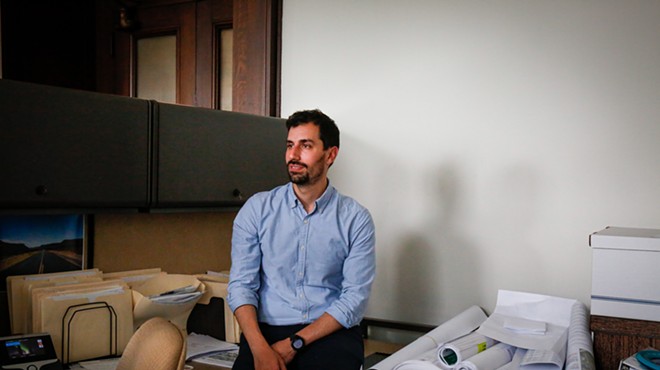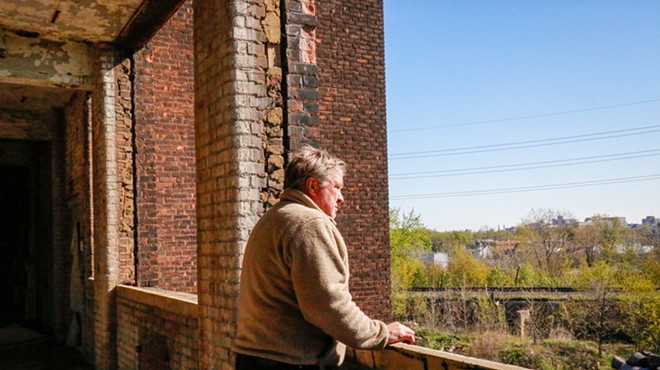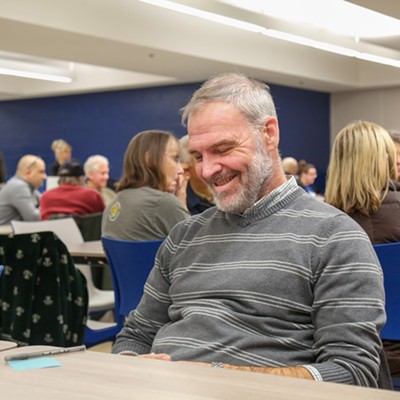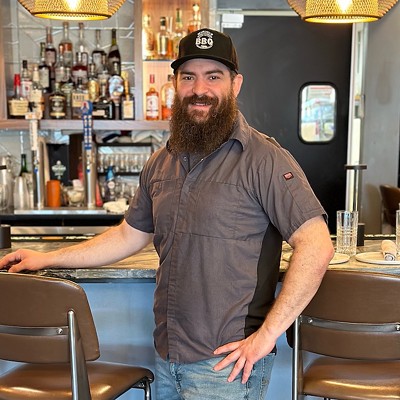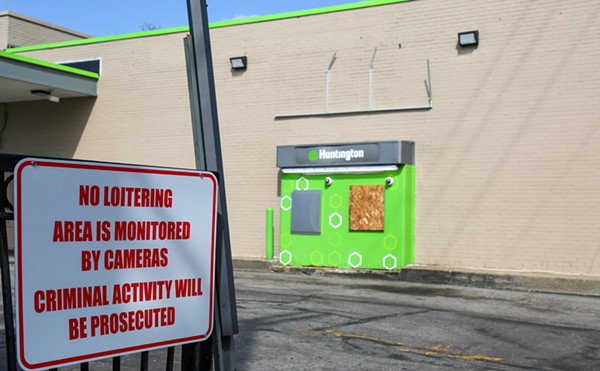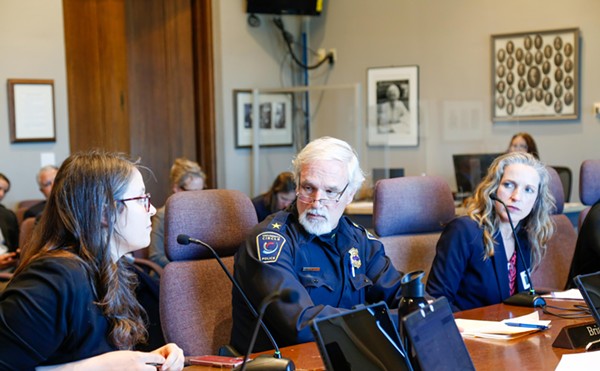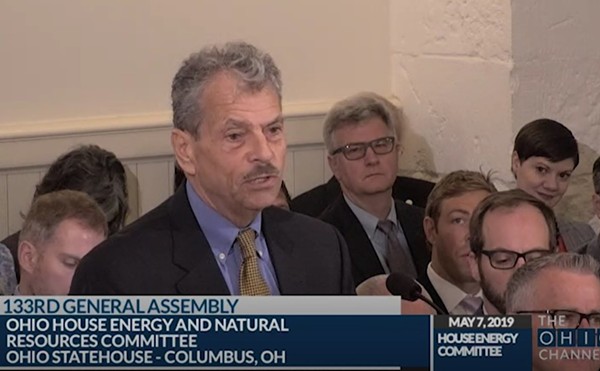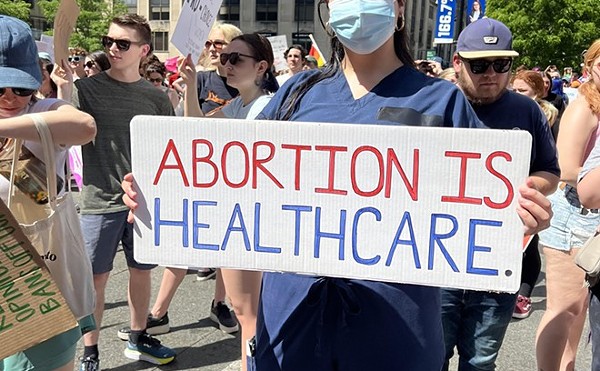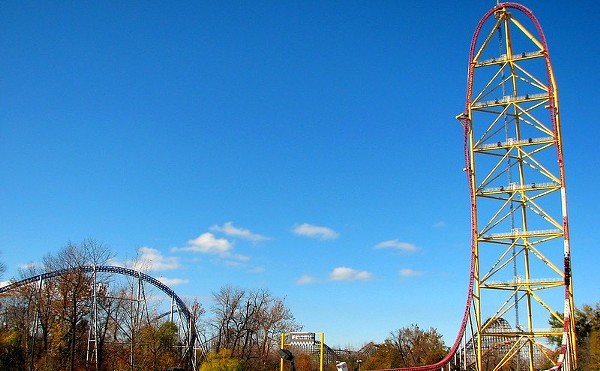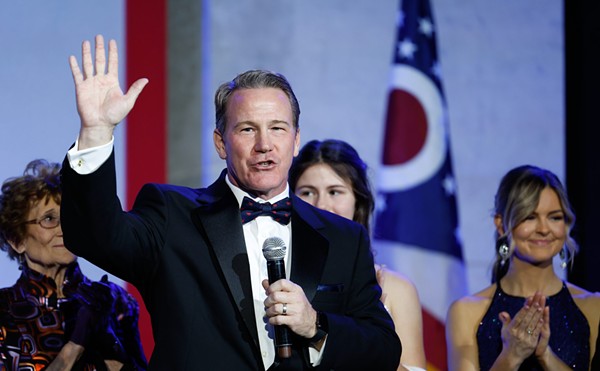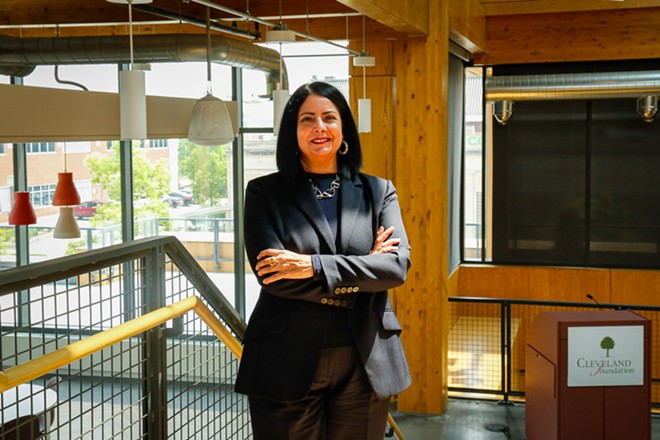
Kuri, the newest director of the Cleveland Foundation, relayed the origin story on a recent tour of the foundation center in Midtown she helped design. Her parents, immigrants from Lebanon, bought land in Northeast Ohio the mid-1960s, shortly after marrying. They joined the First Congregational Church. They hosted picnics, parties, and several of Kuri's mother's 28 first cousins.
"Our farm became this, like, hub for family," Kuri said, walking around the foundation's second floor. "My dad had [over] every Northeast Ohio doctor of Arabic descent."
Kuri, who trained as an architect at Harvard, believed there needed to be a subtle connection between form and place in the design of the foundation's headquarters. "It really sat with me in terms of how, well, this building could do that."
Kuri believes her goal of creating a headquarters that looks as inviting as its design will be felt by the public when the Cleveland Foundation officially opens its doors for its July 15 grand opening in Midtown.
It's an energy Kuri is banking on leveraging to expand the Cleveland Foundation's identity as a community center, and more than just a grant-making machine. Over here, a free-to-the-public dance studio. Up here, a staircase-styled co-working space. Over there, a convertible meeting room for nonprofit galas. Walking around the building with its timber walls, pristine natural light and ultramodern kitchen nooks, one gets the sense that people could fill the space — that is, if the desire is there.
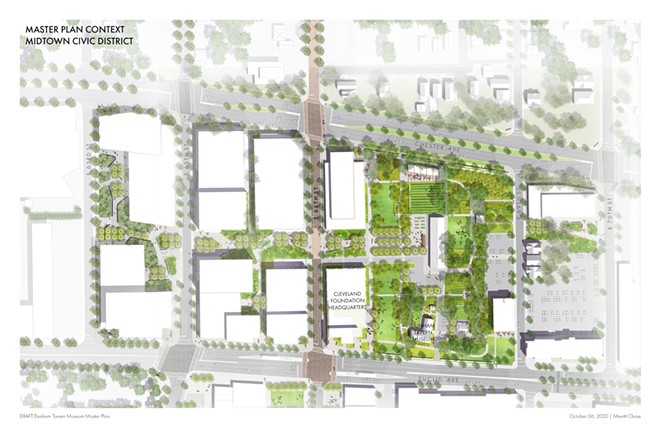
Kuri's hunch segues nicely into recent plans from city and county leaders. Just this week, Mayor Justin Bibb, County Executive Chris Ronayne and Downtown Cleveland Alliance President Michael Deemer announced an idealistic "Reimagining Downtown" strategy, a detailed one- to five-year road map for shaping Cleveland into a more appealing, 15-minute city. Like Kuri's hope for her center, it resembles a walkable, plant-rich, people-friendly neighborhood. Not just a place for commerce.
Much more so, Kuri said, than the Cleveland Foundation's previous location, one tucked away on the 12th and 13th floors of the Hanna Building on Euclid Avenue and East 14th Street, floors for the most part quiet and vacant post-pandemic.
"It feels like we were this great institution, right in the Hanna, doing great things," Kuri said. "But it wasn't visible."
She added, "That was the core of this: how to make that visible, accessible, and felt by people." She smiled, and inhaled. "And I hope you feel that in this building—and smell the timber."
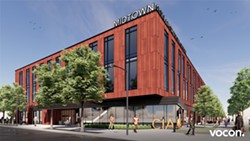
"The historic public greenspace will no longer be public or green, but will instead become more corporate office space in a city already full of vacant commercial real estate," Peter Pattakos, an attorney for Dunham, wrote in a memo after the Supreme Court's decision.
Pattakos criticized the seemingly abject irony of a legacy, money-packed philanthropic organization moving into one of the poorest corridors in the city.
"The Cleveland Foundation touts its status as the world’s first non-profit 'community foundation,' its endowment of $2.5 billion, and its $100-plus million in annual grant-making," he wrote, "while poverty and inequality continue to explode to historic proportions in Cleveland."
For Kuri, location is the precursor to change. Being in Midtown, displaying portraits of its neighbors in its hallway art gallery, keeping open the locally stocked café for passersby — those are things that could subvert longstanding stereotypes about Midtown as a defunct, expedient place.
To make her point, Kuri pointed to an anecdote circa 2020, when the foundation's donors urged to shift grant-making towards "food access and vaccines, whatever it was to make sure people were okay." It's how Kuri responded to the question of how the foundation, which has "proactive" influence over 56 percent of its $131 million charity, will alter its funding interests as Cleveland continues shifting across the post-Covid landscape.
"We're always going to be responsive to the needs of the community," Kuri said, walking around the foundation's third-floor rooftop, bare and awaiting furniture. Across the way is a gravel lot awaiting construction, with a gigantic solar panel to the north. "And we're also going to have some of the dollars go to kind of more proactive, long systemic change or initiatives that might overlap in a long period of time."
Meaning those that align with her contemporaries in office?
"It's kind of a moment, really," Kuri said. "It's a moment."
Editor's Note: A previous version of this story contained outdated info about the percentage of Cleveland Foundation's charity it has "proactive" influence over. The correct percentage is 56. We regret the error.
Subscribe to Cleveland Scene newsletters.
Follow us: Apple News | Google News | NewsBreak | Reddit | Instagram | Facebook | Twitter | Or sign up for our RSS Feed

